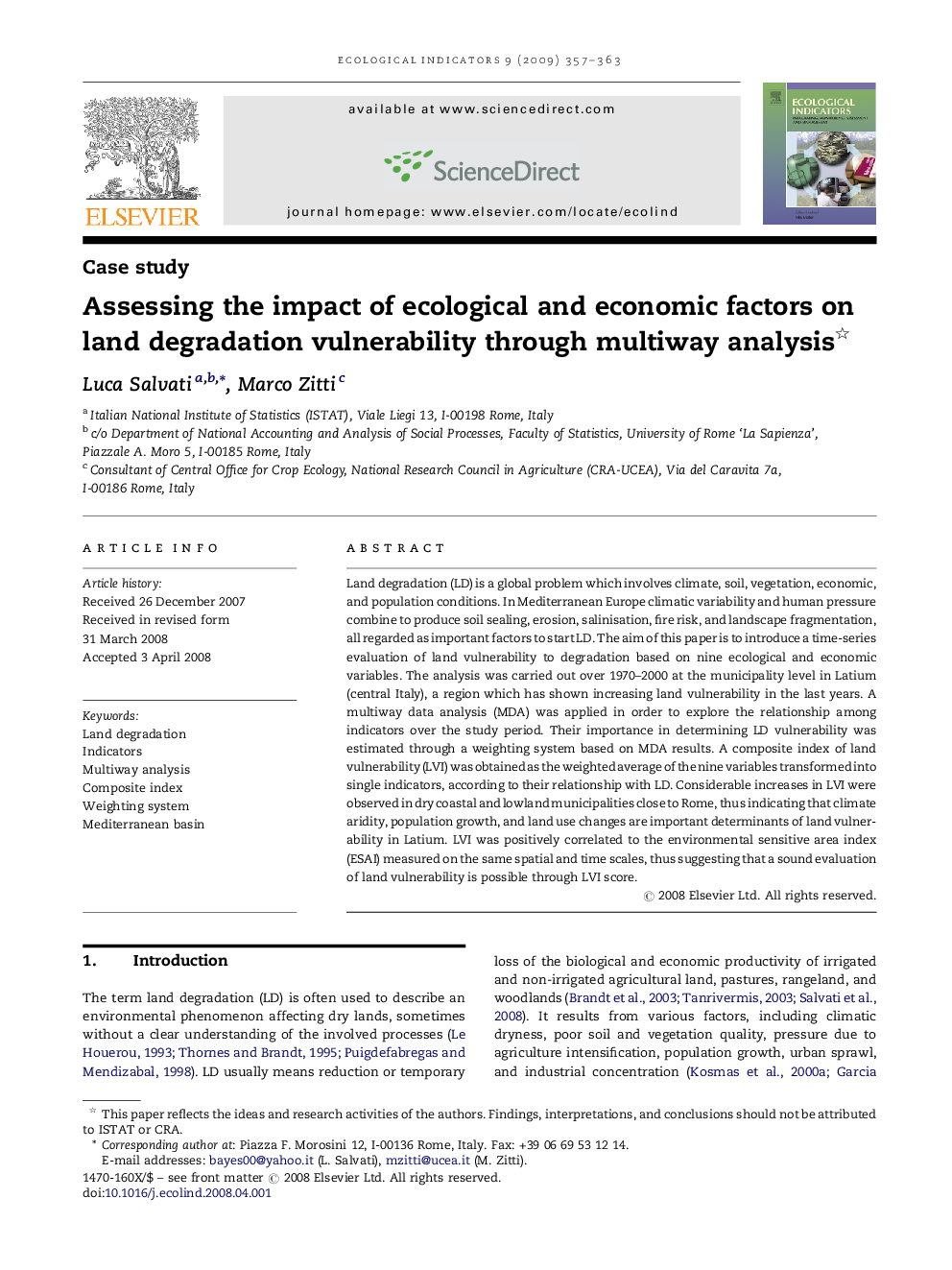| Article ID | Journal | Published Year | Pages | File Type |
|---|---|---|---|---|
| 4374454 | Ecological Indicators | 2009 | 7 Pages |
Abstract
Land degradation (LD) is a global problem which involves climate, soil, vegetation, economic, and population conditions. In Mediterranean Europe climatic variability and human pressure combine to produce soil sealing, erosion, salinisation, fire risk, and landscape fragmentation, all regarded as important factors to start LD. The aim of this paper is to introduce a time-series evaluation of land vulnerability to degradation based on nine ecological and economic variables. The analysis was carried out over 1970-2000 at the municipality level in Latium (central Italy), a region which has shown increasing land vulnerability in the last years. A multiway data analysis (MDA) was applied in order to explore the relationship among indicators over the study period. Their importance in determining LD vulnerability was estimated through a weighting system based on MDA results. A composite index of land vulnerability (LVI) was obtained as the weighted average of the nine variables transformed into single indicators, according to their relationship with LD. Considerable increases in LVI were observed in dry coastal and lowland municipalities close to Rome, thus indicating that climate aridity, population growth, and land use changes are important determinants of land vulnerability in Latium. LVI was positively correlated to the environmental sensitive area index (ESAI) measured on the same spatial and time scales, thus suggesting that a sound evaluation of land vulnerability is possible through LVI score.
Keywords
Related Topics
Life Sciences
Agricultural and Biological Sciences
Ecology, Evolution, Behavior and Systematics
Authors
Luca Salvati, Marco Zitti,
